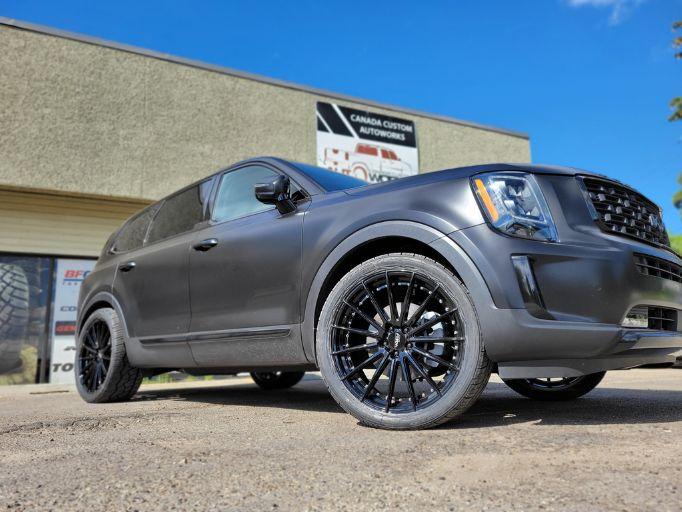Diagnosing car problems can be kind of like diagnosing medical problems - a surface-level symptom can be a sign of a deeper complication. When your tires are worn, you can use the wear patterns to identify problems your car may have - and then fix those problems before they become more severe.
You should expect your tires to get worn down over time - an even wear pattern just indicates that you need to replace your tires soon and isn’t cause for concern. Today, we’re going to look at uneven wear patterns and teach you what they mean about wheel alignment, pressure, and more.
Pressure problems
Tires are like Goldilocks - the pressure needs to be juuuust right. When it’s too high or too low, you get wear patterns that can lead to blowouts and other problems. Here’s what they look like:
Low pressure
When your tire pressure is low, the centre of your tires will be under-inflated. This leads to excess contact between the side of your treads and the road. The sides then become excessively worn. In cases of minor wear, you’ll simply need to inflate your tires to the proper pressure. In very serious cases, the tires may need to be replaced.
High pressure
High tire pressure leads to the exact opposite problem of low tire pressure - an excess of contact between the middle of your tire and the road and excess wear on the middle of the tread. The repairs are the same, too - deflate the tire to the right pressure or replace it in cases of serious wear.
Camber wear
The camber of your wheels describes the angle at which they sit in relation to the road. Wheels with zero camber sit perpendicular to the road. Wheels with negative camber are tilted toward the inside of the car, while wheels with positive camber are tilted away from the car.
Positive and negative camber each have their advantages. Negative camber is useful for taking sharp turns, while positive camber is great for farming equipment and certain off-road vehicles. Most drivers, however, don’t need negative or positive camber. Non-zero camber can lead to wear on the inner or outer shoulder. What’s more, if you have non-zero camber, but you don’t want non-zero camber, what you really have is wheel misalignment.
Feathering
Tire feathering occurs as a result of suspension problems which lead to misaligned wheels. These issues can lead to a distinct pattern on your treads, where the ribs of the treads will be round on one edge and sharp on another edge - kind of like a feather! This is always the result of a pretty serious alignment issue, and you should get your wheels realigned. It’s also likely you’ll need to replace your tires.
Cupping
Tire cupping, sometimes called tire scalloping, is a particular wear pattern where your tires develop high and low points - these appear as divots along the tire. Like feathering, cupping is a sign of serious problems - wheel imbalance, misalignment, and suspension problems can all cause cupping.
If you see cupping, you should take your vehicle to a mechanic as soon as possible. It’s very likely you’ll need to get your tires replaced, though some cupping can be repaired.
How do we know so much about tire problems?
We’re a custom tire shop in Canada, that’s how! We offer everything from alloy wheels in Fort Saskatchewan to wheel alignments throughout the Prairies. Have questions about your wheels? Give us a call - we’ll be happy to help.
